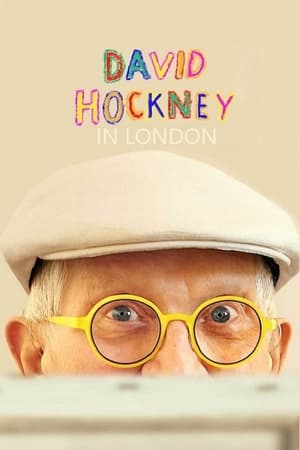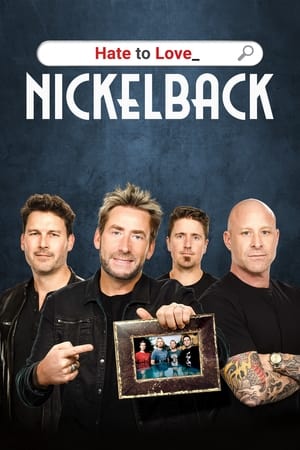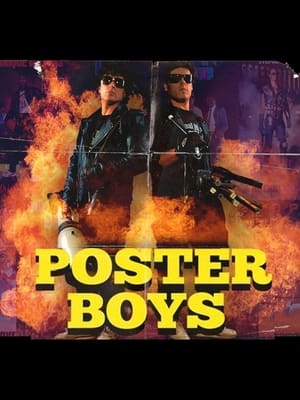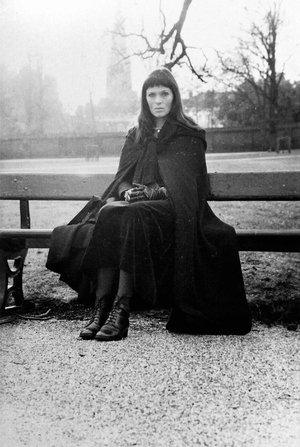

You Don't Need Feet to Dance(2013)
In the film "You Don't Need Feet to Dance," African immigrant Sidiki Conde, having lost the use of his legs to polio at fourteen, balances his career as a performing artist with the almost insurmountable obstacles of life in New York City, from his fifth-floor walk up apartment in the East village, down the stairs with his hands and navigating in his wheelchair through Manhattan onto buses and into the subway. Sidiki struggles to cope with his disability and to earn a decent living, but he still manages to teach workshops for disabled kids, busk on the street, rehearse with his musical group, bicycle with his hands, and prepare for a baby naming ceremony, where he plays djembe drums, sings, and dances on his hands.
Movie: You Don't Need Feet to Dance
Top 1 Billed Cast
Self

You Don't Need Feet to Dance
HomePage
Overview
In the film "You Don't Need Feet to Dance," African immigrant Sidiki Conde, having lost the use of his legs to polio at fourteen, balances his career as a performing artist with the almost insurmountable obstacles of life in New York City, from his fifth-floor walk up apartment in the East village, down the stairs with his hands and navigating in his wheelchair through Manhattan onto buses and into the subway. Sidiki struggles to cope with his disability and to earn a decent living, but he still manages to teach workshops for disabled kids, busk on the street, rehearse with his musical group, bicycle with his hands, and prepare for a baby naming ceremony, where he plays djembe drums, sings, and dances on his hands.
Release Date
2013-03-22
Average
0
Rating:
0.0 startsTagline
Genres
Languages:
EnglishKeywords
Similar Movies
 0.0
0.0The Paper Kites: At The Roadhouse(en)
The 'At The Roadhouse' concert film follows intimate performances and sequences by The Paper Kites, where in July 2022, the band arrived in the small regional Victoria town of Campbells Creek (140km north-east of Melbourne, Australia) to transform an empty heritage building into an American-style roadhouse. Over one month, the band performed a free, unannounced residency at 'The Roadhouse' to locals and passersby on Friday and Saturday evenings, while spending weekdays working on their new record in a barn on the same property. Captured by cinematographer Keiren Watson-Bonnic and edited by lead singer and songwriter Sam Bentley, the feature-length film will take audiences on an intimate journey reminiscent of their time at The Roadhouse, along with the landscape and beauty of Campbells Creek.
Fried Shoes Cooked Diamonds(en)
After World War II a group of young writers, outsiders and friends who were disillusioned by the pursuit of the American dream met in New York City. Associated through mutual friendships, these cultural dissidents looked for new ways and means to express themselves. Soon their writings found an audience and the American media took notice, dubbing them the Beat Generation. Members of this group included writers Jack Kerouac, William Burroughs, Allen Ginsberg. a trinity that would ultimately influence the works of others during that era, including the "hippie" movement of the '60s. In this 55-minute video narrated by Allen Ginsberg, members of the Beat Generation (including the aforementioned Burroughs, Anne Waldman, Peter Orlovsky, Amiri Baraka, Diane Di Prima, and Timothy Leary) are reunited at Naropa University in Boulder, CO during the late 1970's to share their works and influence a new generation of young American bohemians.
 0.0
0.0Antes que Me Esqueçam, Meu Nome É Edy Star(pt)
This documentary is about the artistic trajectory of Edvaldo Souza, aka Edy star, the flamboyant gay singer, actor, dancer, theatrical producer, performer, visual artist and the last of the Kavernistas alive. The script mixes the memories of artists, friends and Edy himself, meeting in a studio with the singer and composer Zeca Baleiro.
Signatures of the Soul(en)
Tattooing — "the world's oldest skin game" — is the subject of this iconic documentary. Writer/director Geoff Steven scored a major coup by signing Easy Rider legend Peter Fonda as his presenter. Travelling to Aotearoa, Samoa, Japan and the United States, the doco traces key developments in tattooing, including its importance in the Pacific, prison-inspired styles, and the influence of 1960s counterculture. Legendary tattooists feature (including Americans Ed Hardy and Jack Rudy), while the closing credits parade some eye-opening full body tattoos.
 0.0
0.0The Rise of K-Pop(en)
BTS, BLACKPINK, iKon, EXO, VIXX, G-idle, NCT. The Korean wave has arrived. K-pop has officially taken over the world. Now some of the biggest artists in the world are the result of a booming idol culture that has brought incredible songs, unmatched choreography and high concept production to a music revolution.
 8.0
8.0Raised by Krump(en)
“Raised by Krump” explores the LA-born dance movement “krumping,” and how the dance has helped the lives of some of the area’s most influential dancers.
 0.0
0.0David Hockney: In Normandy(en)
The celebrated British artist discusses his life and work with Melvyn Bragg in his Normandy studio, revealing his influences, inspirations and plans to keep on painting.
 0.0
0.0David Hockney: 50 Years on Film(en)
Using over 50 years of archive footage, this film looks back at the life and career of David Hockney.
 0.0
0.0David Hockney: In London(en)
Filmed in his London studio, David Hockney sits down with Melvyn Bragg to discuss his remarkable life and career, illustrated by a wide range of his vibrant and joyous artworks.
 0.0
0.0MUSIC STORY -Best Clips & Document-(ja)
Becky's Music Story features all her released music videos and a documentary that includes live footage and her tv program Becky Music Life.
 5.8
5.8Hate to Love: Nickelback(en)
Nickelback is one of the most successful acts in music history — they're also the number one band haters love to hate. This intimate portrait surveys the Canadian stadium rockers' rollercoaster career.
The Sophisticated Misfit(en)
The Sophisticated Misfit is a long-awaited must-have for fans of the artist Shag and Tiki culture alike. This documentary traces the artist’s roots growing up in Hawaii, his artistic journey in college, his early work designing album covers, to his modern-day role as an art-world phenom. In addition to exclusive footage of Shag painting in his home studio, the film features intimate interviews with the artist, his family, artistic influences, tiki-philes, celebrity collectors, and fans.
 7.0
7.0Los posibles(es)
Santiago Mitre co-directs his first movement following The Student together with choreographer Onofri Barbato. Although it would have been more accurate to say “his first film-story-adventure-movie-great movie following The Student”, the word movement fits perfectly in Los posibles, the most overwhelmingly kinetic work Argentine cinema has delivered in many, many years. The film deals with the adaptation of a dance show directed by Onofri together with a group of teenagers who came to Casa La Salle, a center of social integration located in González Catán, trying to find some refuge from hardship. Already entitled Los posibles, the piece opened in the La Plata Tacec and was later staged in the AB Hall of the San Martín Cultural Center. Now, it dazzles audiences out of a film screen, with extraordinary muscles and a huge heart: Los posibles is a rhapsody of roughen bodies and torn emotions. Precise and exciting, it’s our own delayed, necessary, and incandescent West Side Story.
 6.3
6.3Michael Monroe -dokumenttielokuva(fi)
The documentary tells the story how Matti Fagerholm became Michael Monroe. It all began in the late 1970s with Hanoi Rocks, and over 40 years later, Michael Monroe, who still performs solo around the world, is a well known rock icon. The film features not only Monroe but also many international rock superstars and Monroe's mother. The movie covers Monroe's entire career, from tragic turning points to shining moments. In the documentary, Monroe openly talks about his journey towards his dream, the challenges in his career, and the setbacks he has experienced. He has given his all to the genre, never giving up or succumbing to difficulties and misfortunes.
 0.0
0.0Pompeii and the Roman Villa(en)
Narrated by Sir Derek Jacobi - star of the landmark television series "I, Claudius" - this documentary explores art and culture around the Bay of Naples before Mount Vesuvius erupted in AD 79. The bay was then the most fashionable destination for vacationing Romans. Julius Caesar, emperors, and senators were among those who owned sumptuous villas along its shores. Artists flocked to the region to create frescoes, sculpture, and luxurious objects in gold, silver, and glass for villa owners as well as residents of Pompeii and other towns in the shadow of Vesuvius. The film concludes with the story of the discovery of Pompeii and Herculaneum from the 18th century onward.
 0.0
0.0Pierre Bonnard: A Love Exposed(en)
The tender and tragic love story of French painter Pierre Bonnard and his wife and lifelong model Marthe. The artist recorded their relationship on canvas and, 50 years after his death, these paintings have established him as one of the masters of colour and light.
 5.5
5.5Pop Goes the Easel(en)
Pop Goes the Easel was Ken Russell’s first full-length documentary for the BBC’s arts series Monitor. It focused on 4 British Pop Artists - Peter Blake, Peter Philips, Pauline Boty and Derek Boshier.

